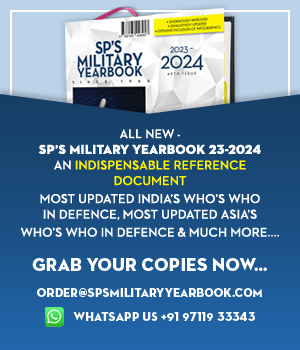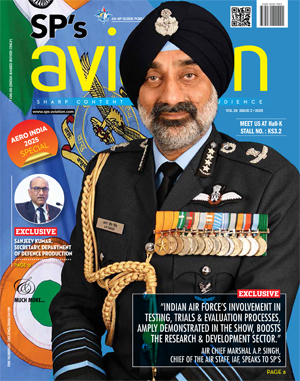INDIAN ARMED FORCES CHIEFS ON OUR RELENTLESS AND FOCUSED PUBLISHING EFFORTS
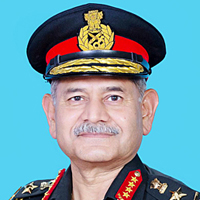
The insightful articles, inspiring narrations and analytical perspectives presented by the Editorial Team, establish an alluring connect with the reader. My compliments and best wishes to SP Guide Publications.
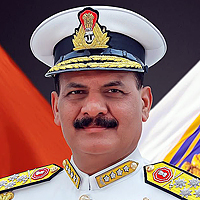
"Over the past 60 years, the growth of SP Guide Publications has mirrored the rising stature of Indian Navy. Its well-researched and informative magazines on Defence and Aerospace sector have served to shape an educated opinion of our military personnel, policy makers and the public alike. I wish SP's Publication team continued success, fair winds and following seas in all future endeavour!"

Since, its inception in 1964, SP Guide Publications has consistently demonstrated commitment to high-quality journalism in the aerospace and defence sectors, earning a well-deserved reputation as Asia's largest media house in this domain. I wish SP Guide Publications continued success in its pursuit of excellence.
PAK-FA at MAKS Air Show
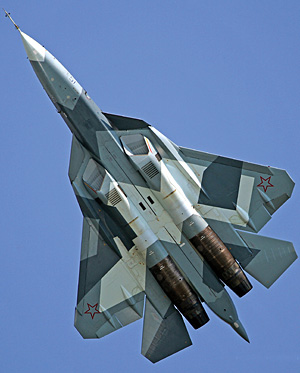
NEWS
Visitors to the recently conducted MAKS Air Show (August 16-21) near Moscow were treated to the first public performance of the Sukhoi’s fifth generation frontline fighter, better known as T-50 PAK-FA. Russia has been conducting flight trials of the new generation supersonic combat aircraft since January this year. The aircraft has been designed to compete with the US F-22 Raptor and F-35 Lightning-II stealth fighters. When production begins, which could be as early as 2015, it will become Russia’s first stealth aircraft and according to the designers will be considerably cheaper than its closest rival—the F-22 Raptor. A 50/50 partner in the PAK-FA project, India is likely to get its version of the fighter by 2017.
VIEWS
The first public apearance of the T-50 PAKFA at the August MAKS Air Show, both on the ground and in the air were indeed awe-inspiring and a real morale booster to the Russian military aviation industry. Although exact details are not known, the Russian PAK-FA dubbed ‘Raptorski’ by some Western analysts because of the striking similarity of its airframe with the US F-22 Raptor, its technical specifications and performance attributes are also likely to be very much similar to that of its US rival. This would be the first Russian fighter to have ‘stealth’ features—very low radar signature making detection by radar difficult if not impossible. Capable of achieving top speed of Mach 2+, the aircraft will have super-cruise capability and extremely high manoeuvrability, credit to vectored thrust. It will be equipped with the Russian active electronically scanned array (AESA) radar which is likely to be an advanced version of the NO35 IRBIS-E radar fitted on the Su-35. Currently, the PAK-FA is being powered by the NPO Saturn 117 engines but the later versions will use a completely new engine (17.5 tonnes thrust) developed by the same company or FGUP MMPP Salyut. Even though declared a 50:50 partner, India joined the joint venture (JV) after dithering for almost six years when it signed on the dotted line on October 27, 2007, committing about $5 billion ( Rs. 23,500 crore) for the development programme. This came as a shot in the arm for the Russian side which was facing innumerable hurdles and time delays, mainly connected with the financial crunch, to progress the programme further. However, with the first flight taking off in January last year, the programme seems to have been fully revived and the recent MAKS debut of the PAK-FA as promised by the designers confirms that the programme is well on track for operational induction into the Russian Air Force around 2015.
Meanwhile, the IAF has shown preference for a predominantly two-seat version of the aircraft in conformity with its operational doctrine and philosophy. The Indian JV partner, the Hindustan Aeronautics Limited (HAL) has reportedly negotiated to get a 25 per cent share of the design and development work in what it calls the fifth generation fighter aircraft (FGFA) programme. But while its work share might include some critical software such as the mission computer, navigation systems, cockpit displays and the CMDS equipment with the help of other related indigenous industries, it is highly doubtful whether it would be able to convert the airframe from single to twin-seat configuration with purely indigenous design changes. It is felt that that this work will have to be undertaken by the Russian designers; who in all probability would design a trainer version of the aircraft for their own use and upgrade it with full combat capabilities to suit the Indian requirements.




